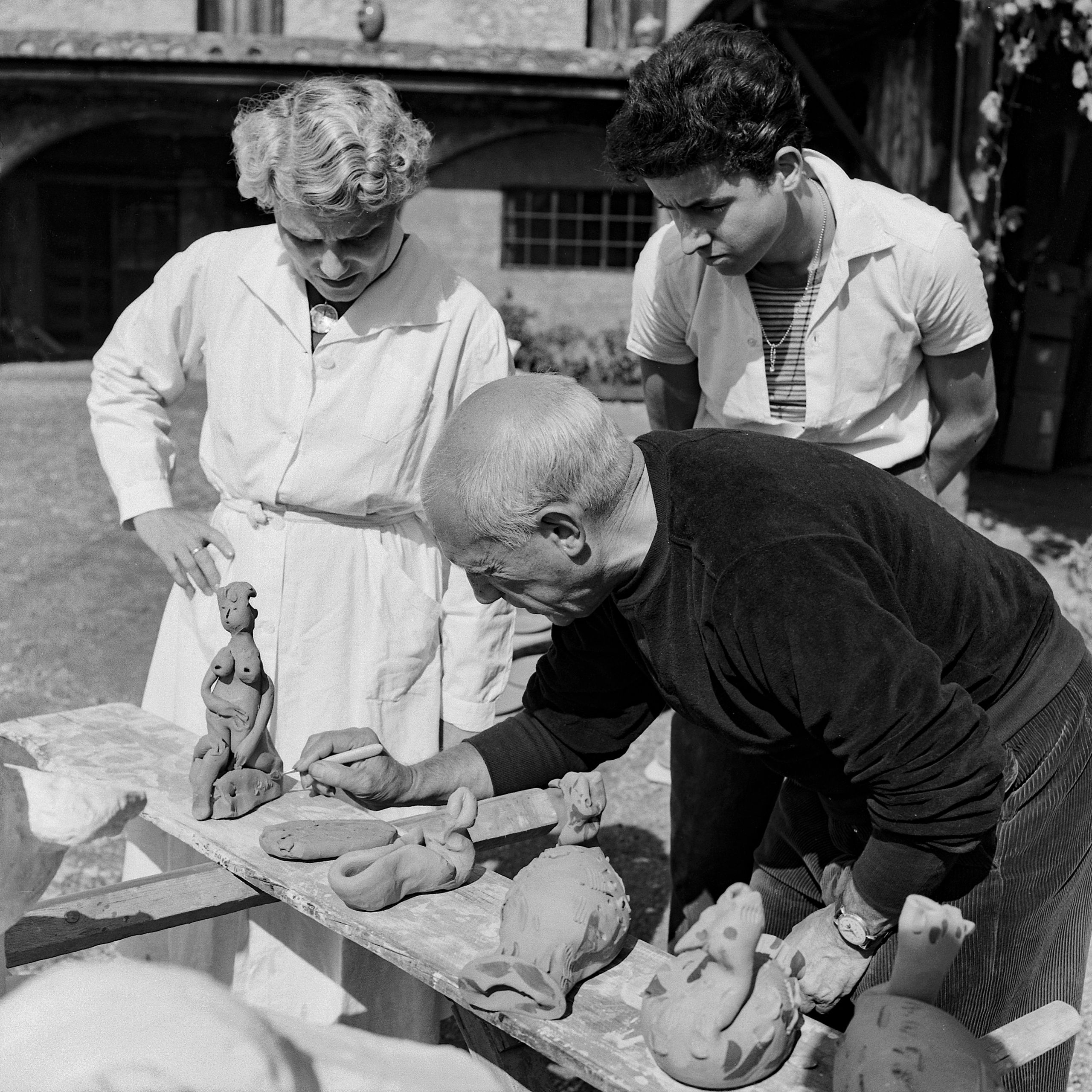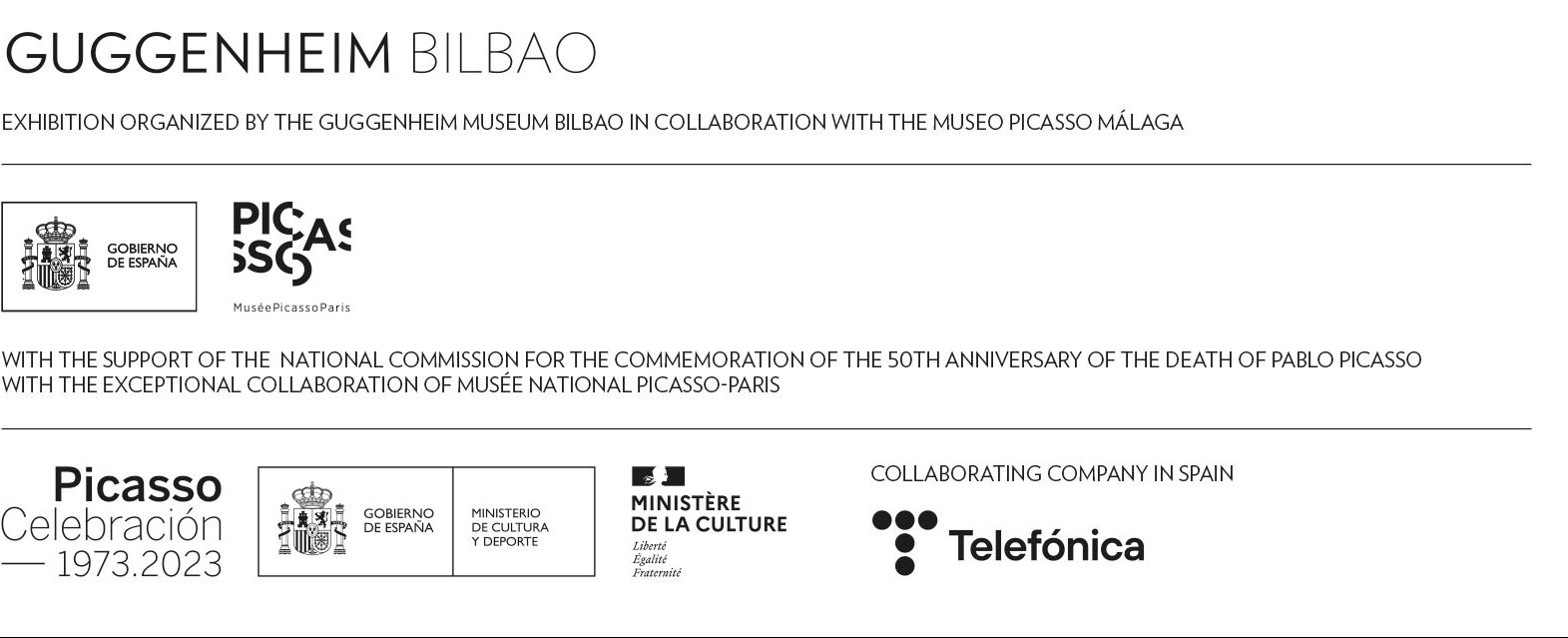
Pablo Picasso
Pablo Picasso with some of the ceramic figures he made in clay, before they are put in the kiln.
With him is Suzanne Ramié of the Madoura pottery. Suzanne is wearing a pendant by Pablo Picasso.
Outside Madoura pottery, Vallauris 1953
Photo Edward Quinn, © edwardquinn.com / © Sucesión, Pablo Picasso, Madrid, 2023.
In 1947 Picasso moved to Vallauris, in the south of France. With the help of ceramists Suzanne (b. 1905; d. 1974) and Georges Ramié (b. 1901; d. 1976), he began to explore ceramic making, a process that has several stages: after the initial modeling, the piece is left to dry and then given a first firing [bisque firing]. The piece is then ready to be glazed and given its final firing. Ceramics offered Picasso a way to transform the material directly with his hands and give free rein to his creativity. With astonishing ease, he used his hands to shape vases and vessels that had first been thrown on a pottery wheel, which he would then paint to accentuate their zoomorphic or anthropomorphic features. You can see Picasso working in this technique in the video shown at the end of this corridor.
Sponsored by:


